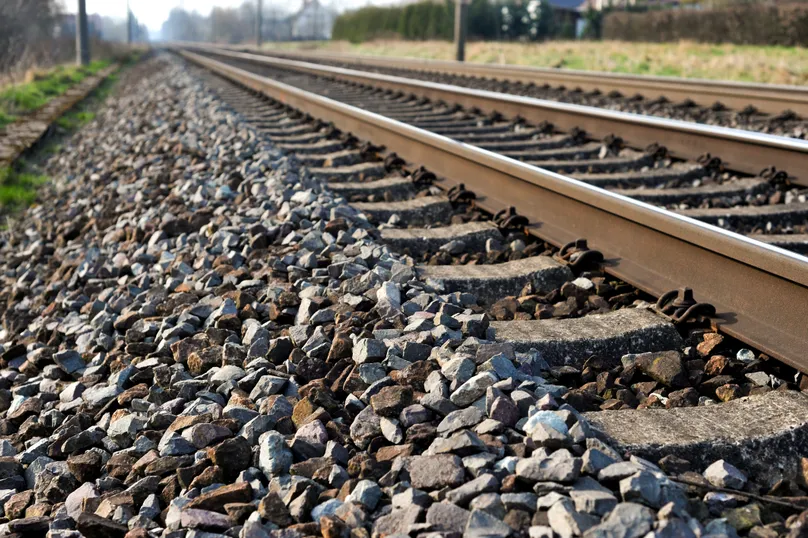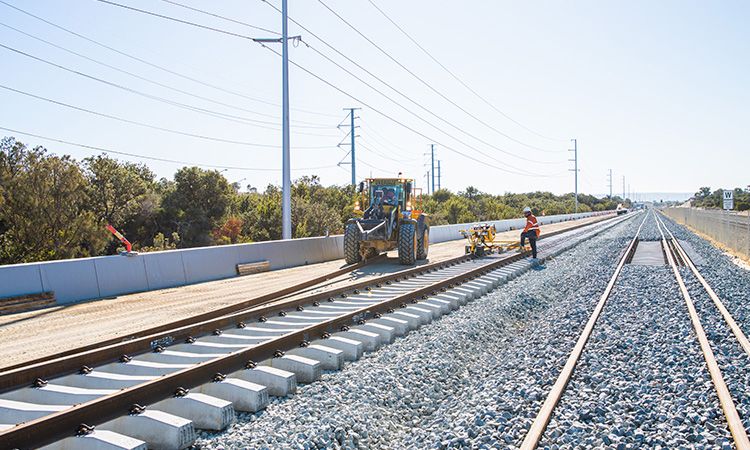Recycled/reused ballast
Ballast is a granular material that forms the uppermost layer of a rail track’s substructure, typically composed of high-quality coarse-sized crushed rock with a nominal size of 53 to 63 mm. Over time, ballast degrades due to operational use and environmental factors, generating significant waste. The end-of-life ballast can be processed as recycled ballast in other end uses.
How is it processed?
The processing of recycled/reused ballast varies depending on its intended end use. If the goal is to repurpose it for rail tracks, the recycling process typically includes cleaning and screening to ensure the recycled ballast meets material specifications by removing fines and contaminants. For other applications, such as road construction or earthworks, the process may involve crushing, screening, or blending to ensure the recycled ballast complies with the relevant specifications.
Environmental, health, and safety
Recycled/reused ballast may contain contaminants from rail operations and external factors. These contaminants must be identified and comply with the Environmental Protection Authority's contamination concentration thresholds before reuse. Potential sources of contamination include:
- existing land contamination and historical land use activities
- construction and track maintenance work (e.g. herbicide/pesticide spraying)
- rolling stock maintenance and operations (e.g. cargo leakage, fuel combustion, abrasion of brakes, wheels and other components)
Additionally, appropriate dust masks should be worn to mitigate the respiratory risk from inhaling fine particles during handling.
Applications
Recycled/reused ballast can potentially be used in a number of infrastructure applications. These include:
- reuse in rail track as ballast layer
- as aggregate for concrete production
- filter & unbound drainage materials
- recycled materials in unbound pavement applications
- railway capping layer material
- backfill material for earthworks
Specifications
Main Road Western Australia does not specify any use of recycled/reused ballast, although it allows the application of recycled sand, which can be screened from waste ballast, in earthworks in Specification 302 for Earthworks, if it meets the required properties and contamination limits.
The Public Transport Authority outlines requirements for various ballast applications, such as an aggregate in concrete and as a subbase or base pavement material, in:
- 8880-450-067: Specification - Roads, Busways and Paths
- 8880-450-074: Specification - Earthworks, Slope Stability, Geotextiles and Erosion Protection
Benefits and Challenges
Recycling and reusing ballast offers substantial benefits to the circular economy, such as preserving natural resources, as well as reducing the disposal of ballast in landfills, transportation costs and associated emissions.
Challenges may include risk of contamination of recycled/reused ballast by heavy metals, hydrocarbons and others. Additionally, the lack of available standards for reusing recycled/reused ballast in Australia presents another barrier for its wider adoption.
Previous use in Western Australia
In 2022, the METRONET Thornlie-Cockburn Link project in Western Australia collected over 10,900 tonnes of old ballast from the existing public transport authority rail. Of this, about 6,700 tonnes of old ballast was reused along the rail alignment for drainage after being screened.

References
- NEWest Alliance 2023, Newest Alliance annual sustainability report – Yanchep railway extension and Thornlie-Cockburn Link, Viewed 9 October 2024, <https://www.metronet.wa.gov.au/Portals/31/Project%20Documents/Yanchep%20Rail%20Extension/2023%20Annual%20Sustainability%20Report%20-%20Thornlie-Cockburn%20Link%20and%20Yanchep%20Rail%20Extension.pdf>.
- Hall, B, Grenfell, J, Pandelidi, C, Yaghoubi, J, Chaudry, U, Lyons, M, O'Connor, G, Harrison, J & Feigen, D 2022, Best practice expert advice on the use of recycled materials in road and rail infrastructure: part A technical review and assessment.
- Hall, B, Grenfell, J, Pandelidi, C, Yaghoubi, J, Lyons, M, O'Connor, G, Harrison, J, Feigen, D & Xue, S 2022, Best practice expert advice on the use of recycled materials in road and rail infrastructure: part B sustainability impacts report.
- ecologiQ 2022, Recycled materials in rail infrastructure reference guide, viewed 2 October 2024, <https://bigbuild.vic.gov.au/__data/assets/pdf_file/0010/646912/ECQ_Rail_Infrastructure_Recycled_Materials_Guide.pdf>.
Thornlie-Cockburn Link ballast reuse initiative
